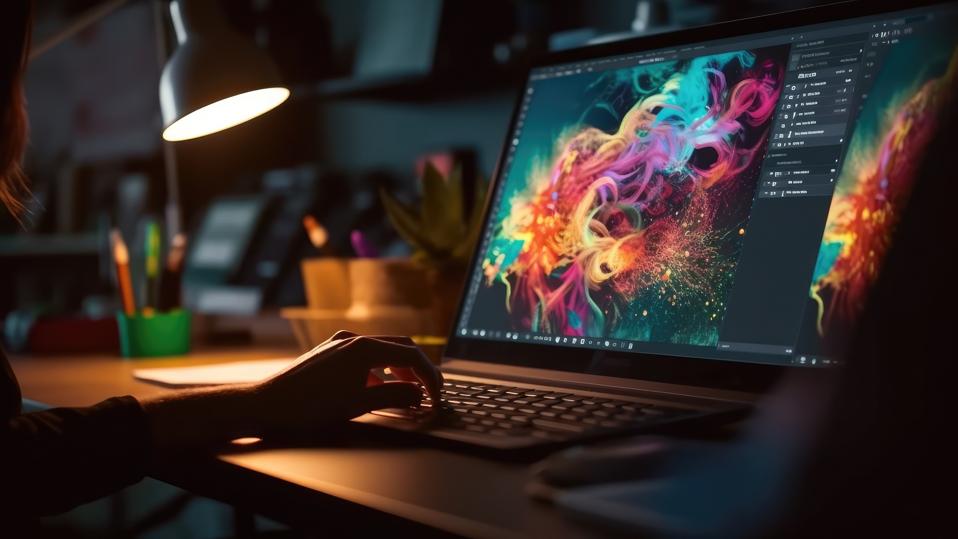In the ever-evolving world of graphic design, staying ahead of the curve is essential. As we look towards 2025, the integration of AI tools in graphic design is not just a trend but a necessity. These tools are revolutionizing the way designers work, enhancing creativity, and improving efficiency. In this article, we will delve into the Top AI tools for graphic design 2025, highlighting their features, benefits, and the impact they are set to have on the industry.

The Rise of AI in Graphic Design
Artificial Intelligence has been making waves across various industries, and graphic design is no exception. With AI tools, designers can automate mundane tasks, allowing them to focus on what truly matters creativity and innovation. The adoption of AI in graphic design is set to grow exponentially by 2025, making it crucial for designers to familiarize themselves with these tools.
1. Adobe Sensei: A Game Changer
Adobe Sensei is a powerful AI tool that integrates seamlessly with Adobe’s suite of design software. It helps designers by automating repetitive tasks, such as image tagging and editing, freeing up time for more creative work. With Adobe Sensei, designers can enhance their workflow and produce high-quality designs more efficiently.
2. Canva Magic Resize: Simplifying Design Adjustments
Canva’s Magic Resize tool is a must-have for designers looking to create multiple versions of a design quickly. This AI-powered tool automatically adjusts the dimensions of a design to fit various platforms, saving time and effort. For digital creators working on social media campaigns, Canva Magic Resize is a game-changer.
AI Tools Enhancing Creativity
3. DeepArt: Transforming Images with Style Transfer
DeepArt uses AI to transform photos into artwork by applying the style of famous paintings. This tool is perfect for designers looking to add a unique touch to their projects. With DeepArt, the possibilities for creative expression are endless.
4. Runway ML: Bridging the Gap Between AI and Design
Runway ML is an innovative platform that allows designers to experiment with machine learning models without needing extensive coding knowledge. This tool opens up new avenues for creativity, enabling designers to integrate AI capabilities into their projects seamlessly.
Boosting Efficiency with AI
5. Let’s Enhance: Revolutionizing Image Quality
Let’s Enhance is an AI-powered tool that improves image resolution without losing quality. For designers working with low-resolution images, this tool is invaluable. By enhancing image quality, designers can ensure their work looks professional and polished.
6. AutoDraw: Simplifying the Illustration Process
AutoDraw by Google is an AI tool that helps designers create illustrations quickly. By predicting what the user is attempting to draw, AutoDraw offers suggestions and enhances the design process. This tool is perfect for designers looking to create simple illustrations efficiently.
AI Tools and the Future of Graphic Design
The integration of AI tools in graphic design is set to redefine the industry by 2025. As these tools become more sophisticated, they will offer designers new ways to enhance their work and push creative boundaries. By embracing AI, designers can stay ahead of the competition and deliver exceptional designs.
7. Sketch2Code: Bridging Design and Development
Sketch2Code is an AI tool that converts hand-drawn sketches into HTML code. This tool is particularly useful for designers working on web projects, as it streamlines the design-to-development process. By automating this conversion, Sketch2Code saves time and reduces the potential for errors.
8. Colormind: Enhancing Color Palettes
Colormind is an AI-powered tool that generates color palettes based on deep learning. For designers, choosing the right color scheme is crucial, and Colormind makes this process easier. By analyzing millions of images, Colormind suggests harmonious color combinations that enhance the visual appeal of a design.
Challenges and Opportunities
9. Navigating the Learning Curve
While the benefits of AI tools are undeniable, designers must be prepared to navigate the learning curve associated with these technologies. Investing time in learning how to use these tools effectively will be key to unlocking their full potential.
10. Embracing Collaboration
AI tools offer exciting opportunities for collaboration between designers and technology. By embracing these tools, designers can work more efficiently and collaboratively, leading to more innovative and impactful design solutions.
Staying Informed and Updated
11. Engaging with Online Communities
Staying informed about the latest developments in AI tools is crucial for designers. Engaging with online communities, such as forums and social media groups, can provide valuable insights and tips for using these tools effectively.
12. Continuous Learning and Development
The design industry is constantly evolving, and designers must commit to continuous learning and development. By staying updated on the latest AI tools and trends, designers can ensure their skills remain relevant and competitive.
Conclusion
The future of graphic design is undoubtedly intertwined with AI tools. By 2025, these tools will be an integral part of the design process, offering new possibilities for creativity and efficiency. Designers who embrace AI will be well-positioned to lead the industry and produce groundbreaking work.
13. Leveraging AI for Responsive Design
For more insights on how AI is shaping the future of design, check out AI for Responsive Design.
14. Predicting Design Trends
Learn more about how AI predicts design trends by visiting How AI Predicts Design Trends.
15. The Role of Neural Networks
Discover the role of neural networks in design by exploring Role of Neural Networks in Design.

FAQs
What are the top AI tools for graphic design in 2025?
Some of the top AI tools for graphic design in 2025 include Adobe Sensei, Canva Magic Resize, DeepArt, and Runway ML. These tools enhance creativity and improve efficiency for designers.
How can AI tools benefit graphic designers?
AI tools benefit graphic designers by automating repetitive tasks, improving image quality, and offering new avenues for creativity. They help designers focus more on the creative aspects of their work.
Where can I learn more about AI tools for graphic design?
For more information on AI tools for graphic design, you can visit Filestage Blog and HubSpot Blog.







